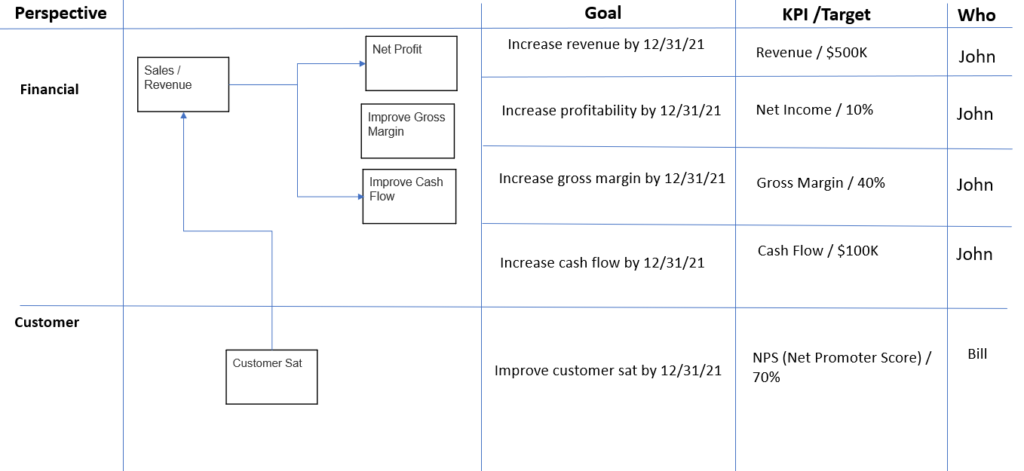In our last blog post, we discussed how to determine if your strategy is working and linked strategy to the main goals of any business:
- To generate a profit
- To generate cash
- To accomplish your mission
Your strategic moves should be linked to those top three goals.
We introduced the balanced scorecard as a way to link your strategic moves together which are the essence of your strategy.
To break this down further, we’ll look at the first two perspectives of the strategy map – “financial” and “customer”.
You can see below that the customer perspective (as measured by customer satisfaction) drives the financial perspective as measured by revenue. Revenue will drive net profit, gross margin, and cash flow.

Your strategy is basically an experiment. You are presenting a hypothesis here. Your hypothesis is, if we add more value to the customer, we can charge more, we will retain more customers and that will in turn result in more revenue, cash flow, and net income.
This is why you must link your strategic goals together – if you do not, you will have no idea if the strategic moves you are making are actually affecting those top three goals (profit, cash, and mission). You could waste a great deal of time and money.
How do you know you’re adding value to the customer? Ultimately revenue, but use a leading indicator (KPI – key performance indicator) – NPS to see if we are actually adding value.
This map includes goals, KPIs, targets, and a “who” or who is ultimately responsible for achieving this goal (which is a critical part of strategy execution).
In our next blog post, we’ll dig into how certain activities add value to the customer by looking at the next perspective, “internal processes”.
As always, if you need help developing your strategy, contact us.